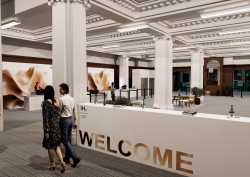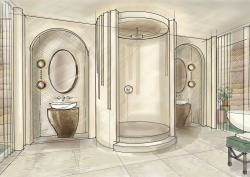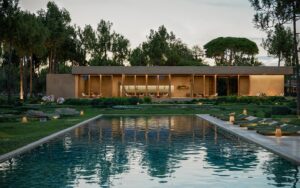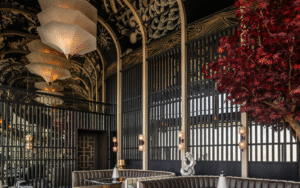Hot off appearing as guests on the Travel By Design podcast from Marriott, George Yabu and Glenn Pushelberg meet with Editor and host of that podcast episode, Hamish Kilburn, to discuss urban jungles, boundaries in luxury and creating protagonists to keep the design and hospitality scene on its toes…
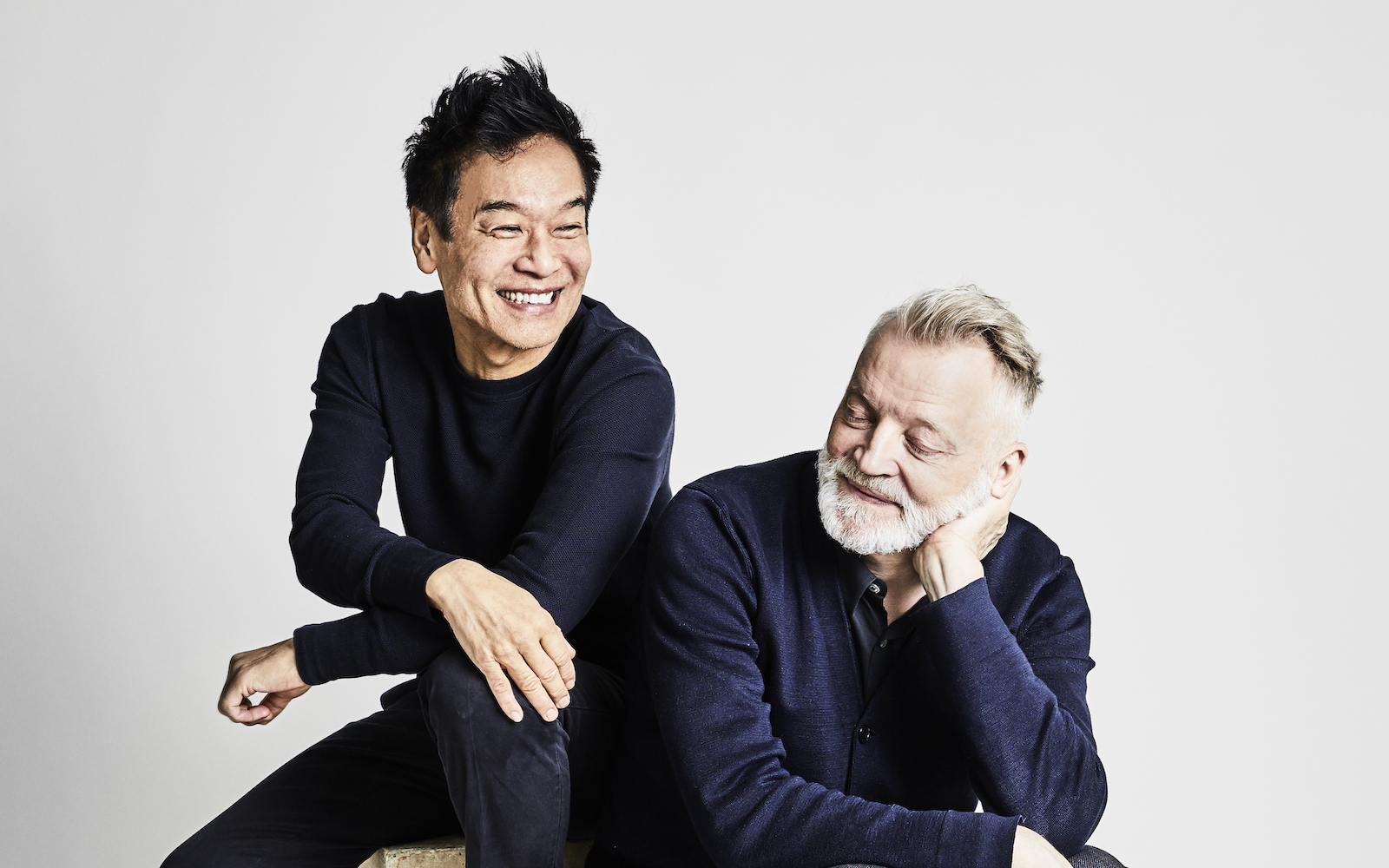
“I think it was a dry cleaners,” replied Glenn Pushelberg after I asked himself and George Yabu, both Founders of Yabu Pushelberg, to identify their first project that they worked on together. For many world-leading design studios, it would be a memory easily accessed. “I don’t even remember,” laughed Yabu. And perhaps that is what makes this design duo dynamic and always on the pulse and unlike any designers I have met before – it’s less about looking backwards and more about moving ahead; thinking big and challenging existing interpretations of hotel design.
In an episode of Travel By Design, a podcast hosted by myself and brought to you by Marriott Bonvoy Traveller, I welcomed the pair as my special guests. The episode was designed to allow listeners to understand the design narrative of two hotels in particular that Yabu and Pushelberg were working on at the time, Moxy Downtown and Downtown Los Angeles AC. What made this project exceptional was the fact that both hotels – two brands with, at times, contrasting personalities – were being designed at the same time, and under the same roof.
“Moxy Hotels have a loose and playful energy while Downtown Los Angeles AC is tailored and refined,” explained Pushelberg. “They have their own unique personalities yet are tethered together – one responds to the extravert and the other responds to the introvert. Depending on where my emotions are at, I can choose which journey I want to take. If I am traveling for work, I will choose the AC so I can come back to an environment that is grounded, centred, and more aligned with the pace I need to recharge. If I am in Los Angeles for exploration, I would choose Downtown Los Angeles Moxy because of its free-spirited nature will bring out other dimensions of my personality.”
Following this meaningful podcast interview with the designers that peeled away the layers of each hotel, I caught up with both Yabu and Pushelberg to understand more beyond their latest masterpieces.
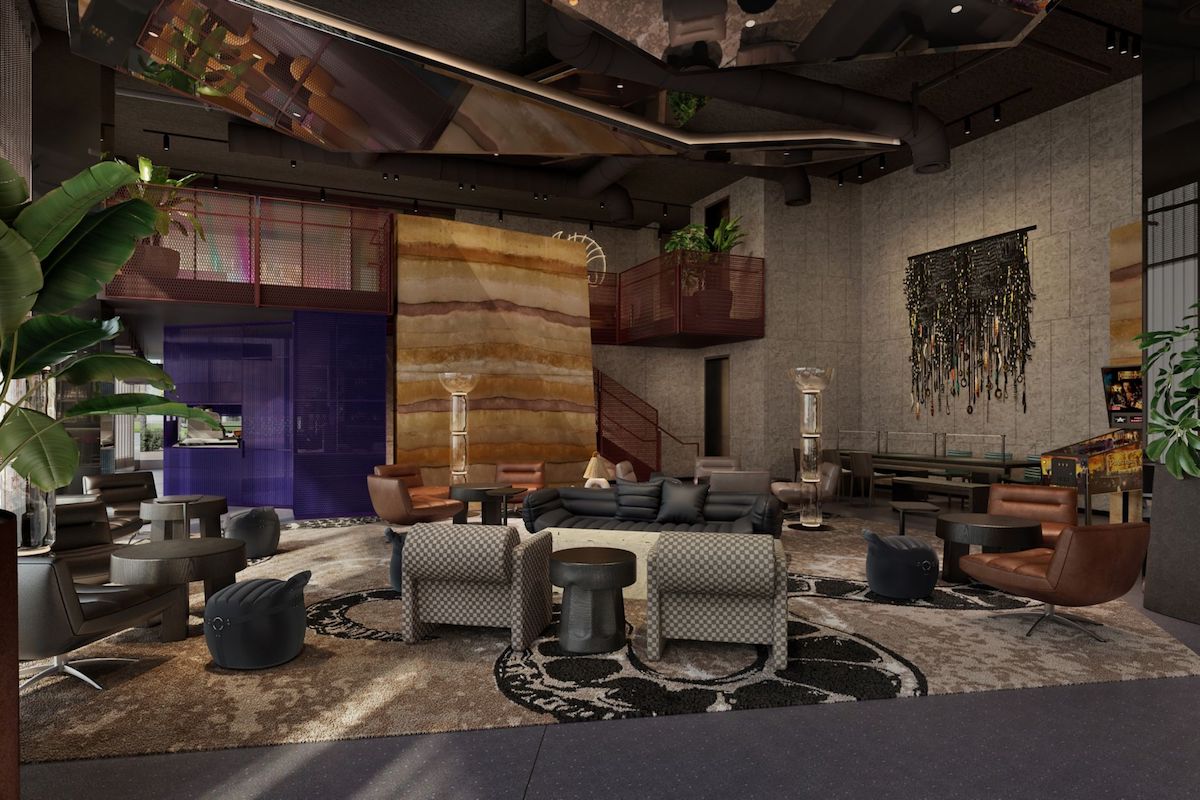
Image caption: Render of lobby area inside Moxy Downtown LA, designed by Yabu Pushelberg. | Image credit: Marriott International
Hamish Kilburn: How do you see boundaries being blurred in hotel design between lifestyle and luxury?
George Yabu: This is a big question and it all comes down to how people want to feel in spaces and define their time. People want to feel a rainbow of feelings, while remaining confident that the experience can understand and rotate with their mood, needs and desires. Obviously, the guilded lily associated with traditional luxury has fallen to the wayside, and people are more intrigued with authentic storytelling. Aman Tokyo Residences is a great example of that, and a project we are proud to be sharing with the world soon.
HK: If you can’t remember the first project, can you at least let us know how it all started for you?
Glenn Pushelberg: Well, we met at university, but it wasn’t until after we graduated and ran into one another on the street that we connected. We were both looking for studio space and did the logical thing of renting a place together. One day we were helping one another complete a drawing for a project and when we met in the middle, it looked like it was completed by one person. That was a defining, albeit cliché moment for us as partners both in work and in life.
“The hotel is an homage to performance, with each public space imbued with the character of someone essential for bringing a production to life.” – George Yabu, Co-Founder, Yabu Pushelberg.
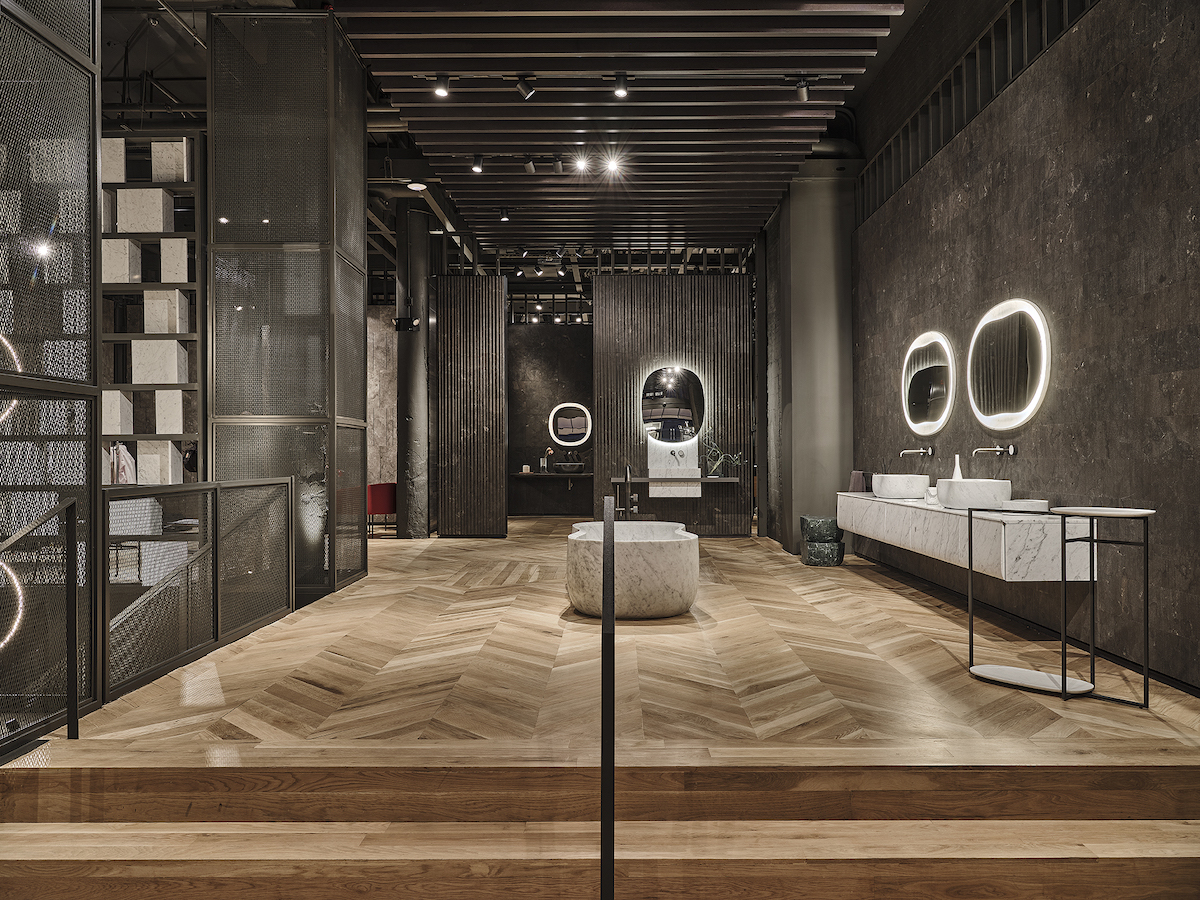
Image caption: Salvatori showroom, designed by Yabu Pushelberg. | Image credit: Matteo Imbriani
HK: I love how the spaces and atmospheres you create are formed around a make-belief protagonist that you create to centre the design narrative. In your careers, what have been the wildest protagonists you have created when imagining a punchy design scheme?
GP: I am not sure if I can pinpoint one of our wildest characters, but a project storyline that stands out to me is The Londoner. The hotel is an homage to performance, with each public space imbued with the character of someone essential for bringing a production to life. For example, Whitcomb’s All Day Dining is an ode to the screenwriter. Its poetically layered design gives the space character and a unique storyline, with specific decorative details such as the abundant harvest table introducing elements of whimsy and fantasy.

Image credit: The character-full lobby inside The Londoner, designed by Yabu Pushelberg. | Image credit: Henry Bourne
GY: The Londoner was designed to play into the roots of Leicester Square as London’s historic theatre district. We created layers of programming up into the sky and deep into the earth that emphasise this extraverted, alluring, playful voice.
Why this project stands out to us is it wasn’t about one character, it was about a collaboration of perspectives and styles into one cohesive experience. There was a delicate balance of giving space to each character/environment to stand on its own while contributing to an overarching story.
“After a while, we found an interior scope limiting and we want to set out to create a complete experience.” – Glenn Pushelberg, Co-Founder, Yabu Pushelberg.
HK: From inside your studio, how has design helped brands amplify other sides of their personalities?
GP: Design is a way to tell stories and the brands who get that are the ones that stick around. We are fortunate to be trusted by an array of brands who come to us for guidance on how to express luxury, or an attitude, or develop a style. Our job is to understand who they are and how to tell a story that is authentic to them, while guiding them and their clientele forward.
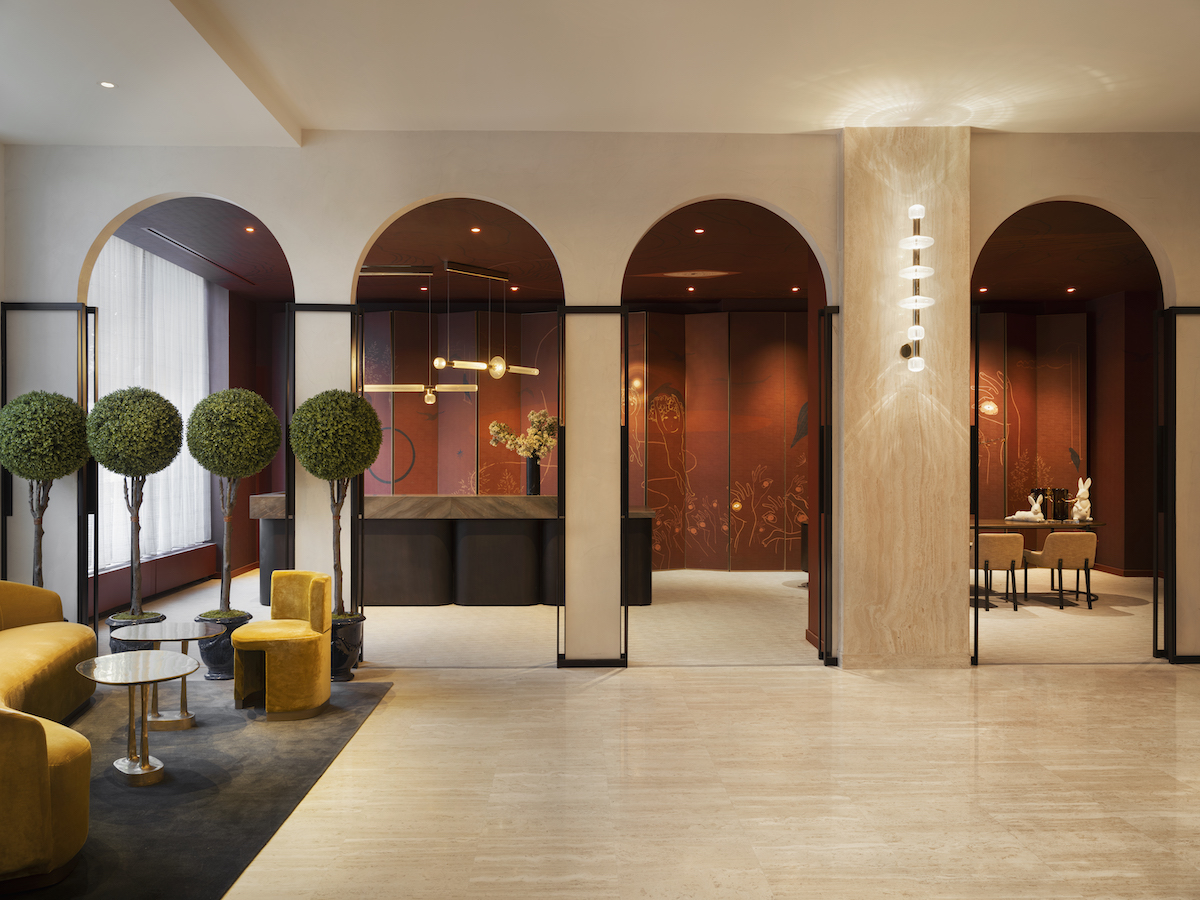
Image caption: The public areas inside Park Lane New York City, designed by Yabu Pushelberg | Image credit: Alice Geo
HK: In your projects, it is clear that design and architecture are interlinked – one doesn’t work without the other. What examples of your work best reflect this, and can you explain what the approach was to create them?
I think this question explains how the studio has naturally evolved over time. We started out 43 years ago as an interior design studio beginning our journey in retail design, which naturally progressed into hospitality projects. With time, we had the opportunity to collaborate with partners who trusted our vision. In return, we got to build stories for these partners and brands who long term helped shape how we chose to express ourselves. After a while, we found an interior scope limiting and we want to set out to create a complete experience. To us that meant designing the furniture and products that set the scene, developing the aura of a space through light, activating the character of a space through styling, and selecting the artworks that brings everything together. Each piece of an environment contributes to the story and it was a goal of ours to be the bridge to the elements so we could create spaces poised with purpose, soul, and joy.
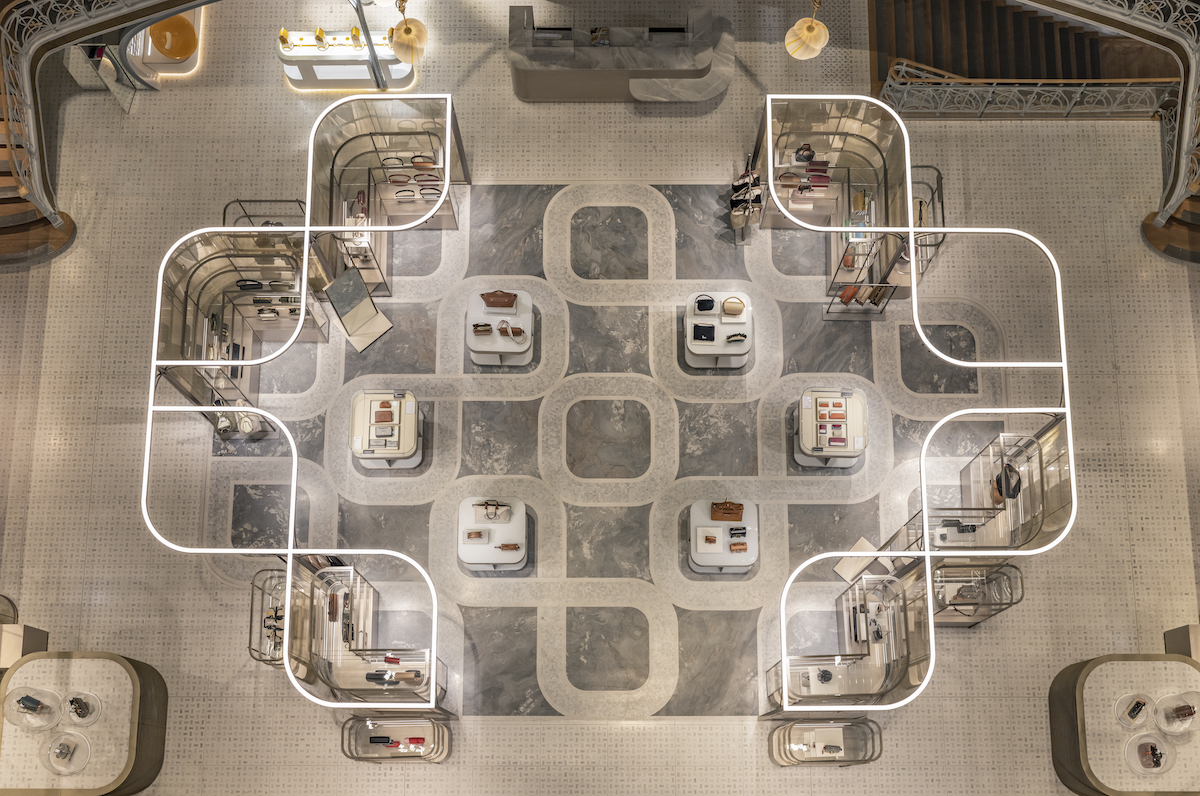
Image caption: La Samaritaine, designed by Yabu Pushelberg | Image credit: Jerome Galland
HK: If when designing spaces, you are designing around a protagonist – or a lifestyle you are trying to create, can you explain the design approach when creating products?
GP: The bedrock of it all is purpose and transformation. There is so much stuff in the world and if we are contributing to creating more, it better be able to stand the test of time, be functional, and ooze purpose.
GY: We design things to spark joy, which comes in a variety of forms for us. With product, we are resolving a problem, likely one we have come across in an interior project. Through interiors, we can pinpoint what is lacking, what could be refined so we can make it better, and what has yet to exist. All our work sits at the same table and creates this ecosystem of thinking that you can see across our work. They all feed into making the other better.
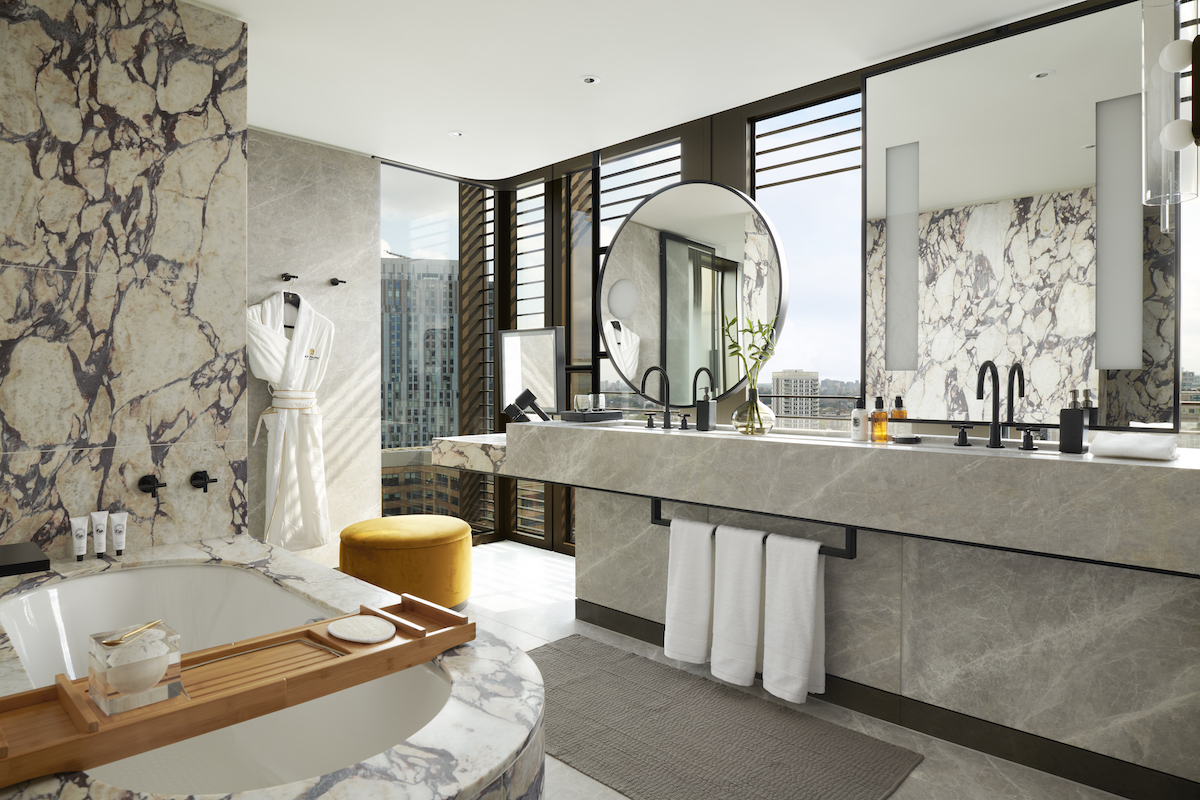
Image caption: Bathrooms inside Pan Pacific London, designed by Yabu Pushelberg. | Image credit: Jack Hardy
HK: Talking to you both, it’s clear you love to travel, which I know where a lot of inspiration comes from. Where in the world would you like to design next if you had the choice, and why?
GP: Brazil, Italy, and Japan. We are fortunate to have projects in each country right now.
GY: Korea is somewhere I would love to travel to.
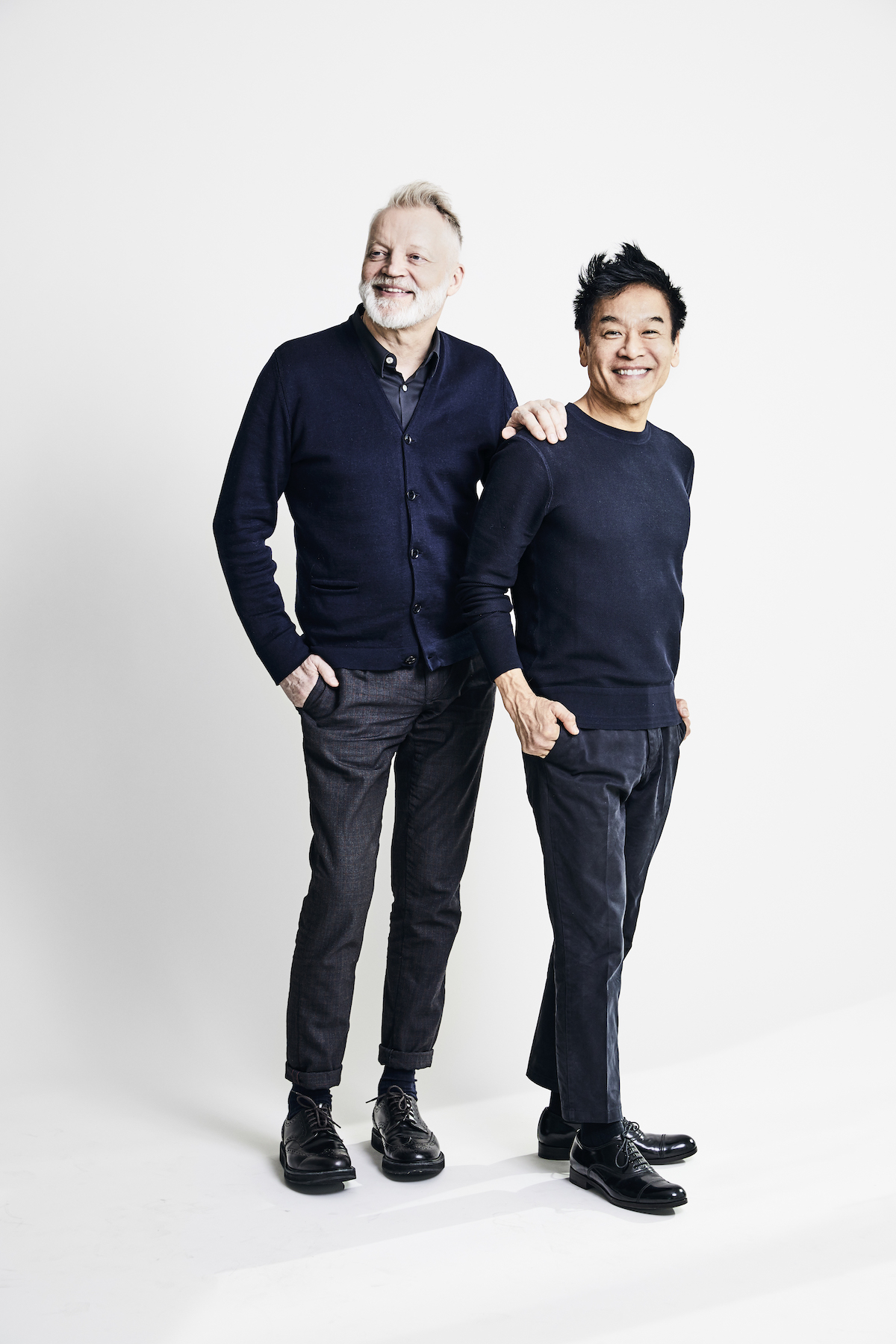
Image credit: Shayan Asgharnia
HK: What does it take to be part of your team?
GP: To be a good team player you need to create an environment where people feel comfortable to express their ideas, good or bad. With time I have learned the importance of creating space to listen to others and learn from them.
Main image credit: Yabu Pushelberg




